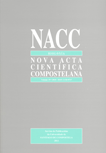Vol 21 (2014), Scientific articles
Submitted: 06-10-2014
Accepted: 25-11-2014
Published: 05-12-2014
The fungi that develop in archives and libraries can be a serious problem for document preservation and health. This phenomenon is enhanced in tropical climates and in buildings with ineffective ventilation or climatization. Therefore, in order to characterize the air mycobiota of the Cuban Office of Industrial Property has made it study and evaluation in vitro of biodeteriogenic and pathogenic capabilities of isolates. The samples were taken using a biocolector SAS Super 100. In 25 strains (64% of total) cellulolytic, amylolytic, proteolytic activity and excretion of pigments and organic acids were determined qualitatively, as well the ability to grow at 37oC and hemolysins excretion. Six genera and two fungal mycelia were detected with Aspergillus spp., Cladosporium spp. and Penicillium spp., predominantly. The 76% of isolates showed high ability to degrade the organic compounds evaluated, excreting acids and pigments, which showed its broad biodeteriogenic potential while 40% were able to grow at 37°C and excreted hemolysins, for that reason they can be classified as opportunistic human pathogens.
anemophilous fungi, indoor environment, health, Aspergillus, virulence factor, opportunistic pathogen


